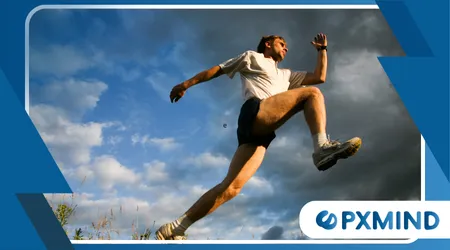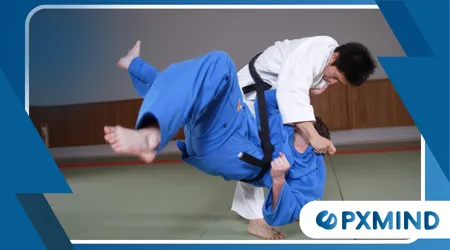The Link Between Movement and Mental Focus

Link Between Movement and Mental Focus. In a world that prizes sitting still, we often forget a crucial fact. Our brains are not islands of thought.
Anúncios
They are deeply connected to our bodies. The sedentary lifestyle of modern work is a silent thief. It robs us of our sharpest minds. To reclaim our cognitive edge, we must move.
How Movement Sharpens Your Mental Acuity
Physical activity is a powerful catalyst for cognitive function. When you move, your heart rate increases. This pumps more blood to your brain.
This increased blood flow brings a surge of oxygen and nutrients. It feeds your neurons, helping them fire more efficiently.
This isn’t just about blood. Movement also triggers the release of key brain-derived neurotrophic factors (BDNF). BDNF is often called “Miracle-Gro for the brain.”
It supports the growth of new neurons and strengthens neural connections. This process is essential for learning and memory.
The Science Behind the Synergy
A landmark study from the University of Illinois demonstrated this perfectly. Researchers found that a mere 20-minute walk before a test could improve performance.
This was particularly true for tasks requiring attention and concentration. The study, published in the Journal of Pediatrics, showed tangible cognitive gains.
This proves that short bursts of activity can have significant impacts.
It’s a testament to the body’s influence on the mind. The cognitive benefits are immediate and cumulative.

Simple Movements for Monumental Gains Link Between Movement and Mental Focus
You don’t need to run a marathon to reap the rewards. Simple, consistent activity is key.
A short walk, some stretching, or even standing up to take a call can make a difference. These small actions break the cycle of mental fatigue.
Read more: How to Use Your Phone Without Losing Focus
They reset your focus and prepare your mind for the next task.
Consider a professional musician. They warm up their hands and fingers before a performance.
They know this physical preparation is critical for a flawless execution. The brain is no different. It requires a “warm-up” to perform at its peak.
Integrating Movement Into Your Daily Routine
Creating new habits can be a challenge. But the benefits are worth the effort. Think of it less as a workout and more as a “brain break.”
Set a timer to remind yourself to stand up and stretch every 30 minutes. Take a walking meeting instead of a seated one.
The options are endless and adaptable. The Link Between Movement and Mental Focus is a practical tool for productivity.
Read here: Productivity Without Burnout: Finding the Balance
This integration can transform a chaotic workday. Instead of pushing through mental fog, you use movement to clear it.
It’s a proactive approach to cognitive health. The same way you wouldn’t let your phone’s battery drain to zero, you shouldn’t let your brain power dwindle without a recharge.
A Practical Guide to Micro-Movements Link Between Movement and Mental Focus
Here’s a simple framework for integrating movement into your day. These are not exhaustive, but they are effective starting points.
| Time of Day | Suggested Movement | Cognitive Benefit |
| Morning (pre-work) | 10-minute brisk walk | Boosts alertness, primes brain for the day. |
| Mid-Morning (before a complex task) | 5-minute stretching routine | Reduces tension, improves focus for deep work. |
| Post-Lunch | 15-minute walk outside | Fights post-meal slump, enhances creativity. |
| Afternoon Slump (3 PM) | Stand and do a few squats or lunges | Re-energizes mind, breaks cognitive fatigue. |
This table illustrates the simple power of micro-breaks. They are designed to combat specific points of mental decline.
They are a powerful part of the Link Between Movement and Mental Focus.

Beyond the Desk: Movement for Deep Work
For tasks requiring deep concentration, movement is a secret weapon. Consider a writer facing a blank page.
The simple act of getting up and walking around the room can unlock new ideas.
++ The Brain’s Response to Music: What Research Reveals
It’s a technique many great thinkers have used. A change in physical perspective often leads to a change in mental perspective.
The Link Between Movement and Mental Focus can also be applied to problem-solving.
A complex problem can feel like a tangled knot. Instead of staring at it, get up and walk. The rhythmic motion of walking can put your brain in a different state.
It allows for new connections to form, often leading to a breakthrough.
A recent Gallup poll showed that employees who reported high levels of daily physical activity were 45% more productive than their sedentary counterparts.
This statistic highlights a powerful, tangible connection.
The mind and body are an integrated system. We ignore this at our peril. To truly master our cognitive abilities, we must honor this connection.
A Final Thought on the Synergy
We live in a world that often separates the mental from the physical. But this is a false dichotomy.
Our most powerful minds are housed in bodies that are active and well-cared for. How can we expect to have a sharp, focused mind if we neglect its physical housing?
The Link Between Movement and Mental Focus isn’t an option. It’s an imperative. It’s the key to unlocking your full potential.
Ultimately, the goal is not to become a top athlete. It is to use movement as a tool for mental optimization.
It is about understanding that a strong body supports a strong mind.
This simple truth can revolutionize your work, your creativity, and your daily life. It is a powerful truth, waiting to be embraced.
Frequently Asked Questions Link Between Movement and Mental Focus
Does it matter what kind of movement I do?
No, the type of movement is less important than the act of moving itself. Anything that gets you out of your chair and elevates your heart rate slightly is beneficial.
How long does the mental boost from exercise last?
The immediate benefits of a short burst of activity can last for several hours. The cumulative benefits of a regular routine are long-term, improving overall cognitive function and memory.
Can I get the same benefits from standing all day?
While standing is better than sitting, dynamic movement is more effective.
Standing still for long periods can still lead to muscle fatigue. It’s the act of changing positions and getting your blood flowing that provides the most significant cognitive benefits.
++ Exercise and Mental Health: How Movement Transforms Your Mind.
